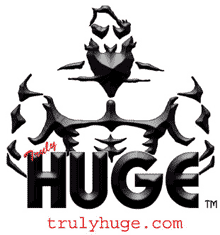
Click Here for Free Bodybuilding and Fitness Magazine Subscription
Hypertrophy is simply the term we use to define the process whereby muscles enlarge and thereby produce greater force. This muscle enlargement is particularly valuable to athletes concerned with performance in events requiring strength and power. Obviously, resistance training is the key to hypertrophy, but the workout must be framed properly to insure we meet our goal. There are two questions we need to answer during this discussion. First, what really happens at the cellular level to produce hypertrophy and second, what type of resistance training should we engage in to maximize hypertrophy?
Cellular Adaptations
Before we begin to look at how to train it is desirable to take a quick look at what is actually occurring deep inside the muscle during resistance training. In earlier columns we have discussed the structure of muscle fibers and examined the small filaments that make up muscle fibers. The main protein elements of muscle contraction are the small actin and myosin filaments that together create the sliding cross bridges that produce force. There are thousands of these filaments in every muscle and simply stated, the more cross bridges that are attached the greater the force and power output capabilities.
Following resistance training, the body adapts by increasing muscle cross sectional area through an increase in the SIZE of actin and myosin filaments. This results in the addition of sarcomeres (the basic contractile package) to existing muscle tissue. It should be noted that there is probably no increase in the actual number of muscle fibers, but rather only an increase in their size. Furthermore, these increases occur in a selective manner primarily to fast twitch muscle fibers and may take as long as eight weeks to become evident.
Type of Training
Now that we are aware of the actual process the muscle undergoes to produce hypertrophy, it is time to investigate what type of program we should engage in to maximize those size increases. Clearly, it requires repeated repetitions of a lift in order to gain muscle size. But, how many, how often and how heavy? They key to this equation is volume.
Volume is most easily defined as the number of sets of an exercise multiplied by the number of repetitions (sets x reps). In other words, performing three sets of 10 repetitions would result in a volume of 30. This is the simplest way to track resistance training over a period of days and weeks. Implicit in this volume discussion however, is the fact that a set of 10 is performed with a resistance that allows no greater than 10 repetitions to be completed and is not merely terminated because an arbitrary goal number of repetitions has been reached. In short, the resistance must be equal to the task in order for the equation to fit our hypertrophy/volume model.
Hypertrophy is most efficiently produced through high volume exercise which is a result of several sets of an exercise—usually between three and five sets of eight to 20 repetitions. This type of training will obviously require a relatively low intensity as measured by the actual resistance lifted. 5. It is the repeated use of sets and reps that stimulates the body to adapt by increasing muscle size and thereby strength.
Conclusion
In the final analysis the key to resistance training is volume. Specific goals may be reached through the use of specific sets and reps3. If hypertrophy is the goal of your exercise regimen then plan to increase your volume by performing 3 – 5 sets along with 8 – 20 repetitions and realize it may take as long as two months for results to appear.
Lee E. Brown, EdD, EPC, CSCS,*D, is Assistant Professor and Director of the Human Performance Laboratory at Arkansas State University. He received his Doctorate at Florida Atlantic University, where he was Health Sciences Lab Coordinator. Dr. Brown is a Fellow of the American College of Sports Medicine, a USAW Certified Club Coach and a Certified Strength and Conditioning Specialist with Distinction (CSCS,*D) with the NSCA.

